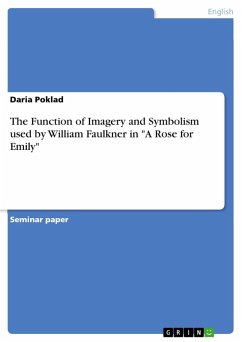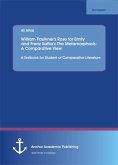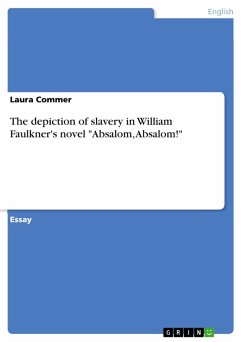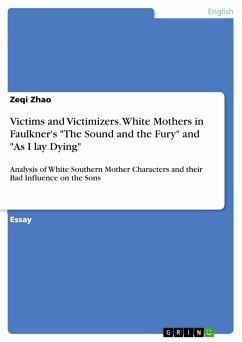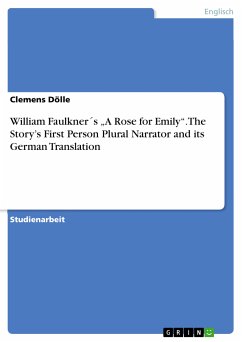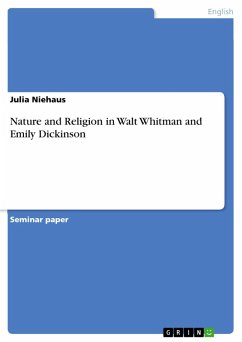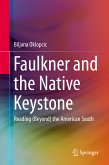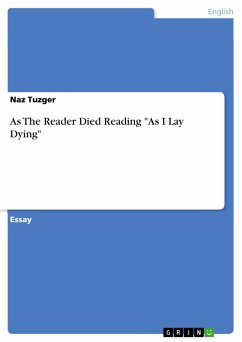Seminar paper from the year 2009 in the subject English Language and Literature Studies - Literature, grade: 1,3, , language: English, abstract: William Faulkner's short story A Rose for Emily is often regarded as a "story of horror", with gothic elements due to its creepy and shocking final scene. Moreover, different themes such as the loss of beloved ones, isolation and the refusal to accept change are covered in this story. There is also a variety of popular readings of A Rose for Emily emphasizing "the conflict between the North and the South" or "the conflict between individual and the community, between the past and the present, between men and women". The question is of how the author depicts such complexity of character, emotion and setting? Faulkner himself said that "in a short story [...] almost every word has got to be almost exactly right" (Petry 54). As a result almost every word in a short story has a greater meaning, which is achieved using imagery and symbolism. Imagery is the representation of experiences of the senses, which uses descriptive, but also figurative language, whereas symbolism is used by "writers to invest objects, actions or ideas with a symbolic meaning". The symbols convey special meanings to the reader, standing for one single idea or many. This paper will analyze the function and use of imagery and symbolism in A Rose for Emily focusing on the functions of the house, how the picture of Emily is drawn, the function of the town, the characterization of the men in the protagonist¿s life, then the aspect of time and finally the attempt to analyze the symbol of the rose in the title trying to reveal a much imagery and symbolic meaning as possible. It will be shown, that a Rose for Emily is complex and rich in imagery, symbolism and ambiguity used by Faulkner to characterize people, describe relations and atmosphere.
Dieser Download kann aus rechtlichen Gründen nur mit Rechnungsadresse in A, B, BG, CY, CZ, D, DK, EW, E, FIN, F, GR, HR, H, IRL, I, LT, L, LR, M, NL, PL, P, R, S, SLO, SK ausgeliefert werden.

